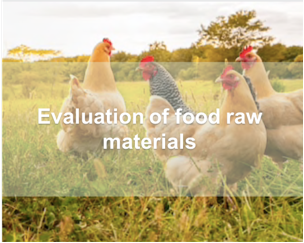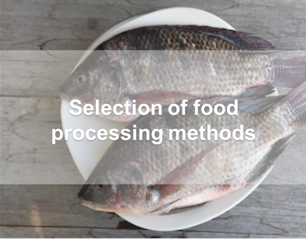Lipidomics in Food Quality
Lipidomics can be employed to study the relationship among structure, types, and properties of lipid components in food at the molecular level, as well as to study the impact of lipid changes on food quality in the process of food processing, storage, and transportation, consequently providing a basis for exploring a safer and more efficient food quality control system for the food industry.
- Evaluation of Food Raw Materials
MS‐based lipidomics has shown a broad prospect in the evaluation of food raw materials. Evaluation of food raw materials covers not only freshness and safety, but also nutritional value.
- Taihe black-boned silky fowl has a history of over 2200 years of being consumed as a curative food in China. In this work, an LC/MS-based lipidomics approach was employed to investigate the characteristic lipid composition of Taihe black-boned silky fowls from different ages and genders as well as from different carcass parts;
- The results do reveal that the influence exerted by the 3 investigated factors on the lipid profile of Taihe black-boned silky fowl muscles decrease in the order of age > gender>part;
- Taihe and crossbred black-boned silky fowls were compared in terms of their lipid compositions based on the same strategy. The results showed that the two groups were able to discriminate from each other effectively. 47 lipid compounds were determined to be potential markers for the authentication of Taihe black-boned silky fowl.
- Selection of Food Processing Methods
Modern food industry is inseparable from food processing. Different processing methods affect flavors and nutritional value of food. MS-based lipidomics can offer meritorious information from both a nutritional perspective and a technical perspective.
- Thermal processing methods have important effects on food lipids;
- In this work, ultra-high-performance liquid chromatography-Q-Extractive Orbitrap mass spectrometry and lipidsearch software were applied to analyze effect of three types of thermal processing methods on the lipidomics profile of tilapia fillets;
- The results demonstrated three types of thermal processing methods had different effects on lipidomics profile differences of tilapia fillets.
Creative Proteomics provides reliable, rapid and cost-effective food untargeted lipidomics based on LC-MS or shot-gun methods for food quality research.
Our Services
- Samples
- For fluid and semifluid food matrices, the uniformity can be generally satisfied by homogenization;
- The selection of sampling methods for solid food matrices depends on the analytical objectives;
- Lipids are prone to oxidation causing loss of target lipids, and thus require protection with antioxidants when necessary;
- Certain food samples and biological samples possess inherent enzyme activities. It is necessary to timely prevent the occurrence of enzyme‐catalyzed reaction after obtaining the samples;
- In conclusion, the appropriate sampling method is selected according to the actual situation to minimize the possible errors, so that the collected samples can truly reflect the overall level of the food to be inspected.
 Fig1. The protocol workflow of untargeted lipidomics in food quality. (Creative Proteomics)
Fig1. The protocol workflow of untargeted lipidomics in food quality. (Creative Proteomics)
Our Advantages
- Tailor extraction protocols and derection methods to target different food samples;
- Send us your sample and receive data in 2-4 weeks;
- A detailed report will be provided at the end of the whole project, including raw data and figures.
If you have any questions about our food untargeted lipidomics services, welcome to contact us.
References:
- Mi, Si.; et al. Characterization and discrimination of Taihe black-boned silky fowl (Gallus gallus domesticus Brisson) muscles using LC/MS-based lipidomics. Food Research International. 2018,109: 187-195.
- C Shi.; et al. Effect of three types of thermal processing methods on the lipidomics profile of tilapia fillets by UPLC-Q-Extractive Orbitrap mass spectrometry.
* Our services can only be used for research purposes and Not for clinical use.
Services:




 Fig1. The protocol workflow of untargeted lipidomics in food quality. (Creative Proteomics)
Fig1. The protocol workflow of untargeted lipidomics in food quality. (Creative Proteomics)
